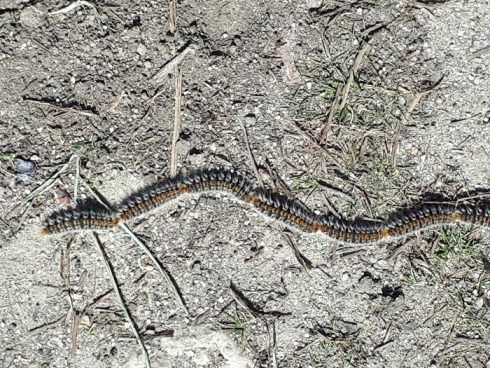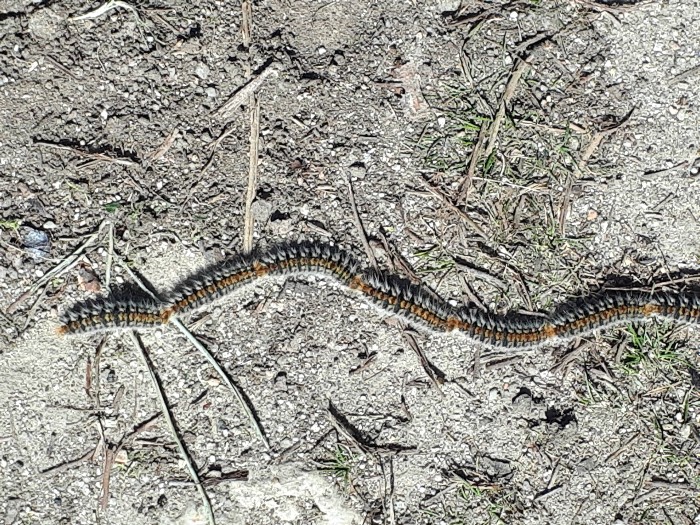DOG owners are being warned to be vigilant for a tiny but deadly creature that could kill your pet.
With the first signs of spring comes a tiny but potentially deadly pest; the Pine Processionary Caterpillar (Thaumetopoea Pityocampa).

Authorities have warned that this year the danger period has been extended due to prolonged rain and colder weather, with Policia Nacional reiterating the warning on March 30.
The can pose a major risk to children and adults causing skin irritation, eye damage and severe allergic reaction. But they can prove deadly to pets.
Dubbed Processionary Caterpillars because they form long lines crawling one behind the other, they appear among pine trees the length and breadth of Spain and the Balearic Islands.
The danger begins across Spain usually from late January and early February until late March when the creatures hatch from candy-floss like nests in pine trees and drop to the ground in search of food.

The caterpillars, measuring between three and four centimeters in length, can be particularly dangerous to young children who may be curious enough to touch them.
Each caterpillar is covered with tiny barbed hairs containing a protein called thaumetopoein. If they feel attacked, they will shoot their tiny hairs like harpoons
But they pose the biggest danger to dogs who may sniff or step on one, causing irritation to the paw which is then licked and the toxins transferred to the mouth.
They could suffer breathing difficulties, vomiting or start foaming at the mouth and should be taken urgently to the nearest veterinary clinic for an immediate cortisone and antibiotic injection.
Rapid intervention and sometimes amputation of the tongue or nose is the only course of action.
The toxins can cause suffocation and often result in death.
While the risk is high if in the countryside and walking through pine forests, they can occur anywhere where pine trees grow including city parks, urbanisations and private gardens.
Municipal councils are responsible for spraying and removing the nests in urban parks but they often fail to eliminate the risk entirely, so always be vigilant.
Badajoz Veterinary Clinic advised dog owners to look out for warning signs,
“You may not be aware that they have been in contact with one of these dangerous caterpillars so if they begin to show signs of hypersalivation, inflammation of the tongue or skin around the nose, aggravated scratching, nervousness or respiratory problems then seek a vet,” said the clinic in a statement.
They advised initial emergency action which could help alleviate problems,
“Wash the affected area with warm water and if you see there are caterpillar hairs on the area then remove them with tweezers.”
It is very important to urgent veterinary attention if you think your pet has come in contact with them as necrosis can develop.
READ MORE:
- Who is that crawling up my wall? What you should know about geckos in Spain
- Warm weather boosts return of harmful processionary caterpillars on Spain’s Costa Blanca










